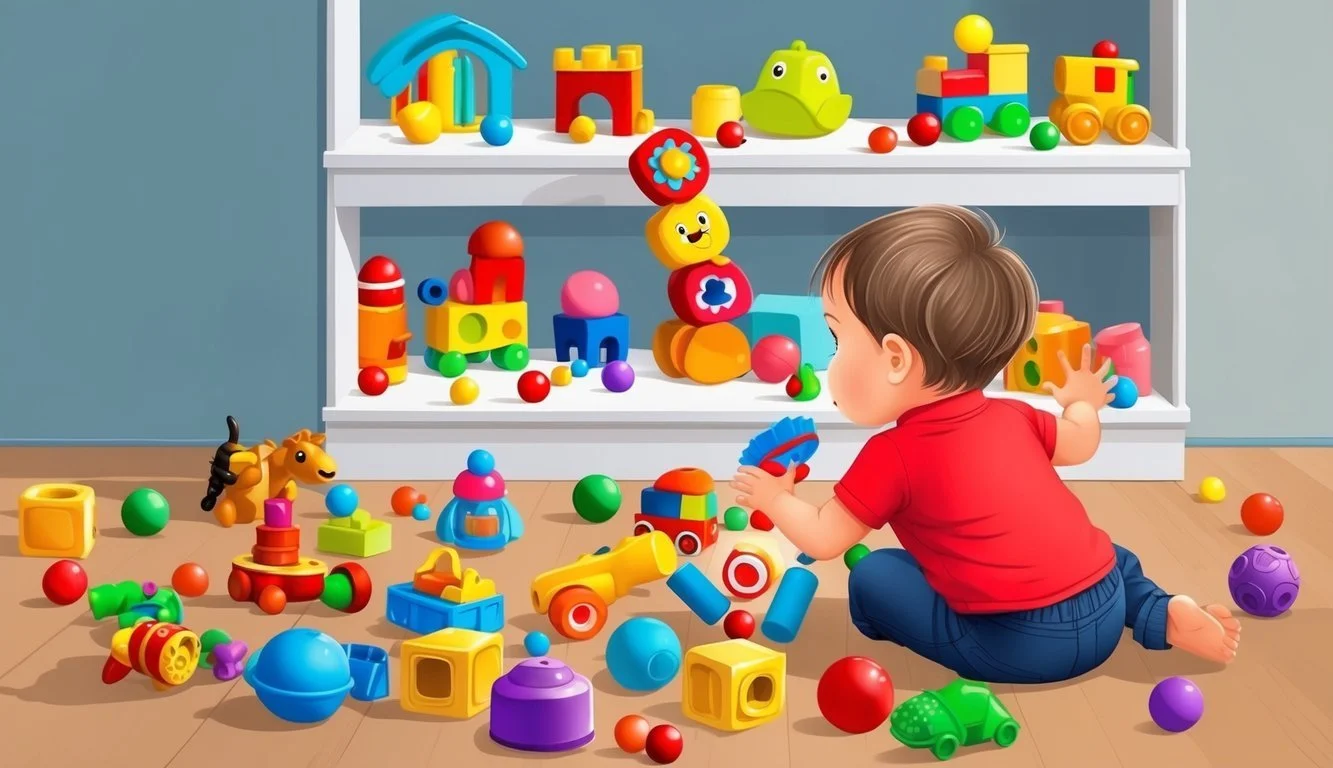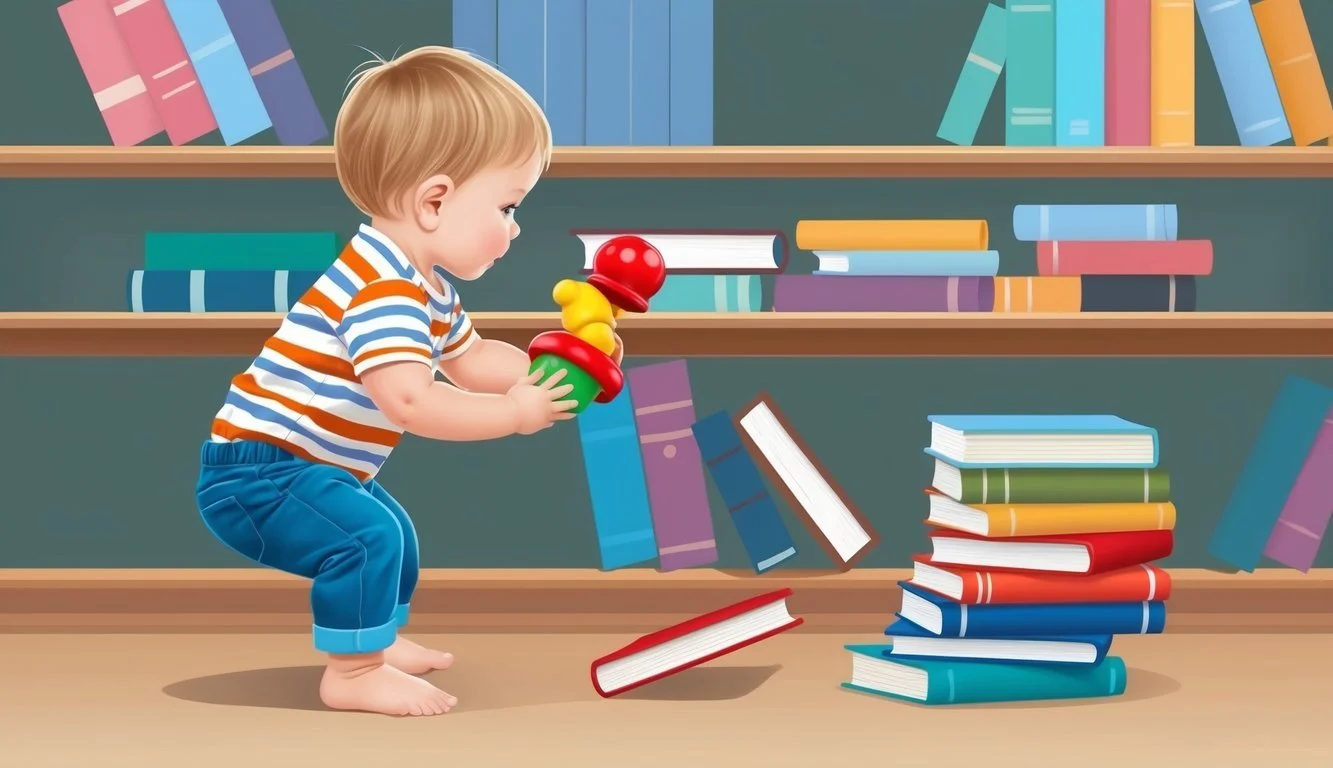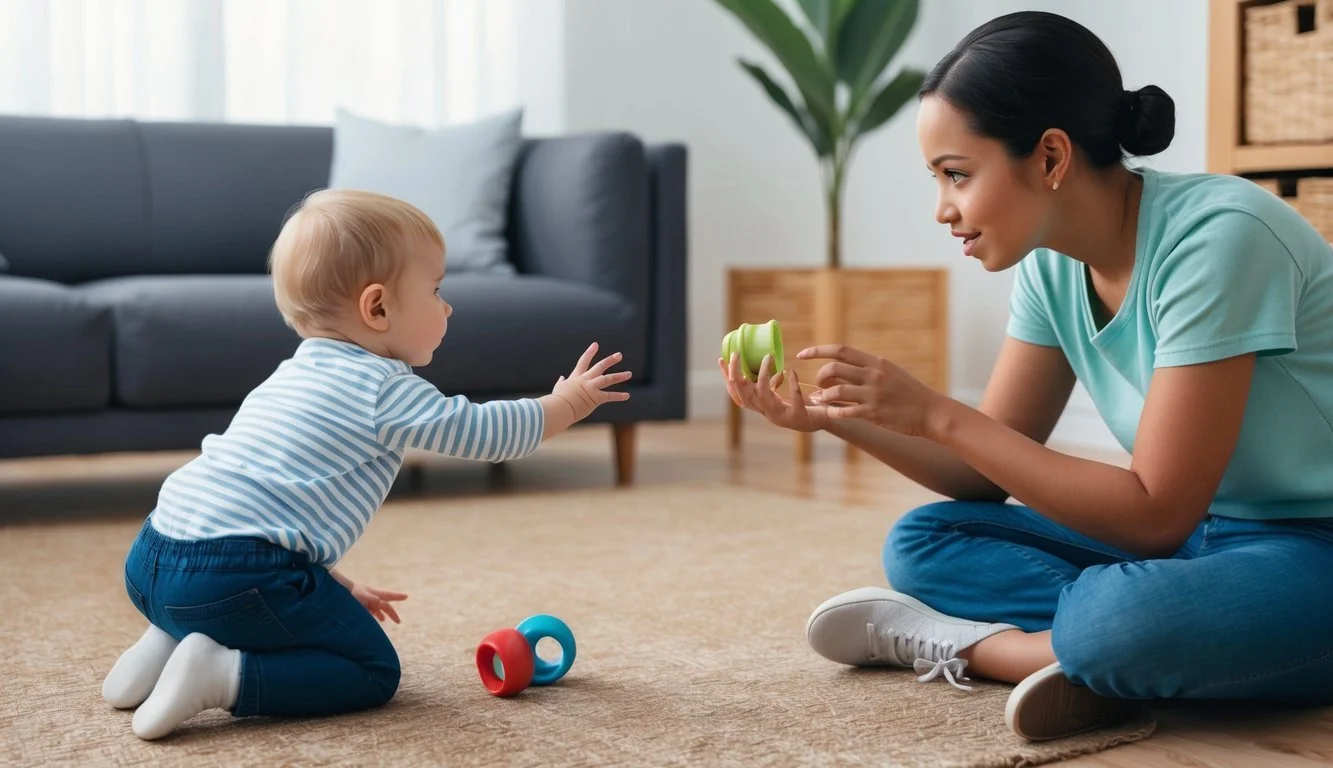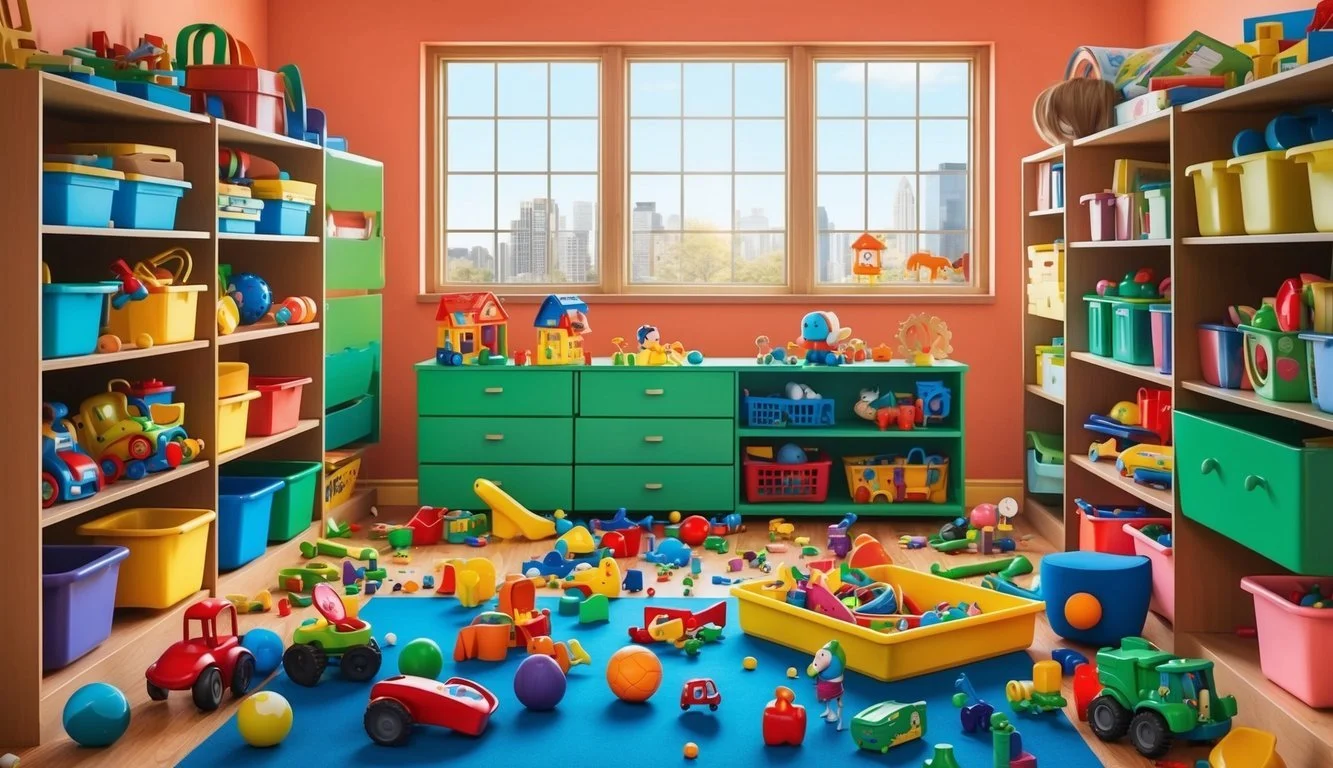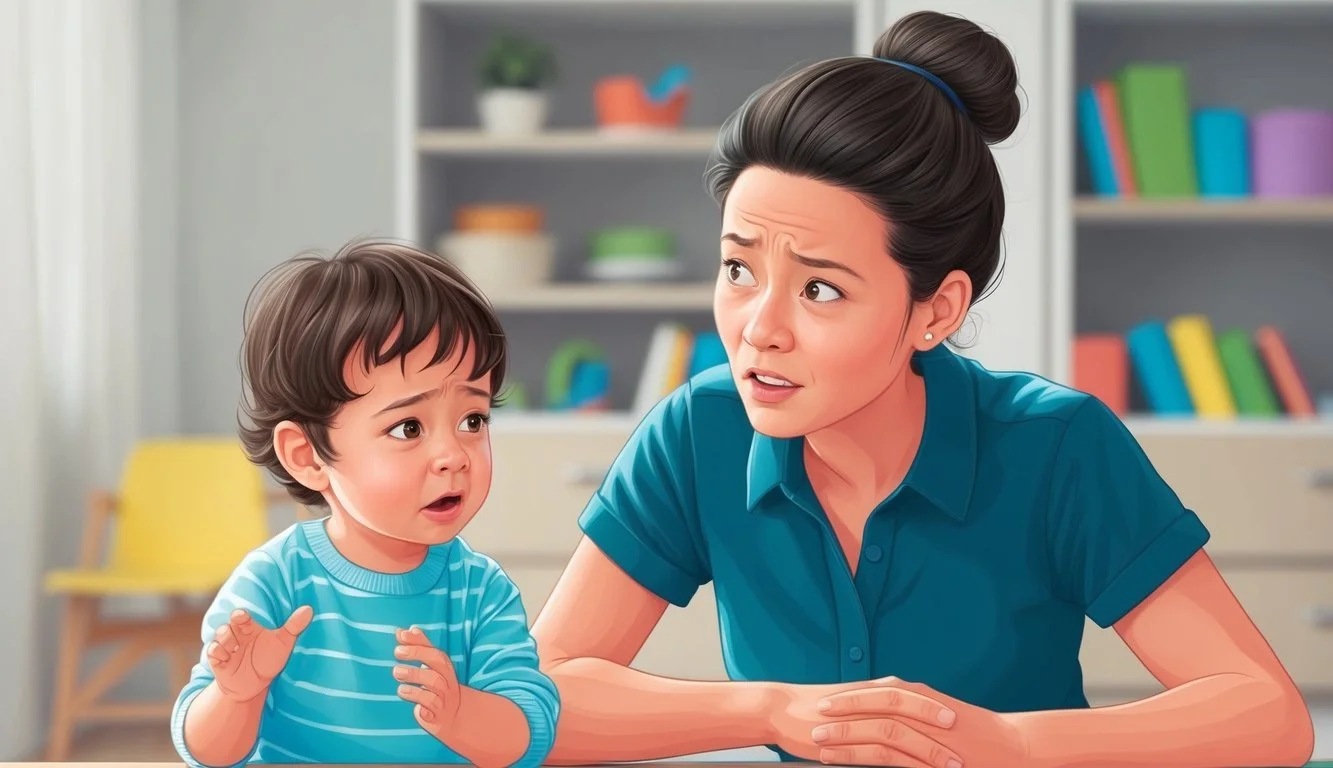Understanding Impulsivity in 2-Year-Olds: A Guide for Parents
Impulsivity is a common trait in 2-year-olds as they navigate the world around them. At this age, children are driven by curiosity and immediate desires, often acting without considering consequences. Most 2-year-olds have limited self-control and struggle to regulate their behavior, which is a normal part of their developmental stage.
Parents and caregivers may find themselves constantly redirecting their toddlers or dealing with sudden outbursts. This behavior stems from the fact that the prefrontal cortex, responsible for impulse control and decision-making, is still developing in young children. As a result, 2-year-olds may grab toys from others, run off in public places, or have difficulty waiting for their turn.
Understanding that impulsivity is typical for this age group can help adults approach these challenges with patience and appropriate expectations. While it's important to set boundaries and teach self-regulation skills, it's equally crucial to recognize that mastering impulse control is a gradual process that continues well into childhood and beyond.
Understanding Impulsivity in 2-Year-Olds
Impulsivity is a common characteristic of 2-year-olds. At this age, children are still developing their self-control and decision-making abilities.
Toddlers often act on immediate desires without considering consequences. This behavior is normal and part of their developmental process.
Two-year-olds may exhibit impulsive actions such as:
Grabbing toys from other children
Hitting or pushing when frustrated
Running away in public places
Touching objects they've been told not to
These behaviors stem from a combination of factors:
Limited language skills
Underdeveloped emotional regulation
Curiosity about their environment
Testing boundaries
Parents and caregivers can help manage impulsivity through consistent guidance and positive reinforcement. Setting clear expectations and offering praise for good behavior can encourage self-control.
Simple games can also promote impulse control. "Red Light, Green Light" or "Freeze Dance" teach toddlers to start and stop on command, helping them practice restraint.
It's important to remember that impulsivity in 2-year-olds is typically not a cause for concern. As children grow, they gradually develop better self-regulation skills.
Patience and understanding are key when dealing with impulsive toddlers. Providing a structured environment and modeling calm behavior can support their developing impulse control.
Developmental Milestones and Impulsivity
Two-year-olds experience significant cognitive and emotional growth. This development impacts their ability to control impulses and regulate behavior, though mastery takes time.
Cognitive Development
At age two, children's thinking skills advance rapidly. They begin to use symbols and mental representations. This allows for more complex problem-solving and imagination.
Two-year-olds can follow simple instructions and understand basic concepts like "big" and "small." Their attention span increases, enabling longer periods of focus on tasks or play.
Language skills expand dramatically. Most two-year-olds use 50+ words and start combining them into short phrases. This verbal ability helps them express wants and needs more clearly.
Memory improves, allowing toddlers to recall past events and anticipate future ones. This cognitive growth provides a foundation for impulse control, though it remains limited at this age.
Emotional Regulation
Two-year-olds experience intense emotions but have difficulty managing them. Tantrums are common as toddlers struggle to cope with frustration and disappointment.
Self-awareness increases during this period. Children recognize themselves in mirrors and photos. They also become more aware of others' feelings, though empathy is still developing.
Toddlers start to assert independence, often saying "no" and wanting to do things themselves. This can lead to power struggles with caregivers.
Emotional vocabulary grows, enabling children to name basic feelings like happy, sad, and angry. However, they still need significant adult support to navigate and regulate their emotions.
Social interactions become more complex. Two-year-olds engage in parallel play and show interest in peers, but sharing and turn-taking remain challenging due to limited impulse control.
Common Behaviors Exhibiting Impulsivity
Impulsivity in 2-year-olds often manifests through specific behaviors that can be challenging for parents and caregivers. These actions typically stem from a child's developing self-control and emotional regulation skills.
Inability to Wait for Turn
Two-year-olds frequently struggle with waiting their turn. This difficulty is evident in various situations, from playtime to mealtime. A child might grab toys from others without asking or reach for food before it's served.
In group settings, they may push to be first in line or become frustrated when required to wait. This behavior often results from their limited understanding of time concepts and delayed gratification.
Parents can help by using visual aids like timers or creating simple turn-taking games. Praising patience, even for short periods, reinforces positive behavior.
Frequent Interruptions
Interrupting conversations or activities is common among impulsive toddlers. They may suddenly interject with unrelated comments or demands while adults are speaking.
This behavior stems from their immediate desire to share thoughts or needs. Two-year-olds often lack the social awareness to recognize appropriate timing for communication.
To address this, parents can:
Establish a signal for when the child needs to wait
Practice role-playing conversations
Acknowledge the child's input briefly, then redirect them to wait
Consistency and positive reinforcement are key in teaching turn-taking in conversations.
Sudden Emotional Outbursts
Impulsive toddlers often experience intense, rapid mood swings. These can manifest as:
Unexpected tantrums
Excessive laughter
Abrupt crying spells
These outbursts typically occur when a child feels overwhelmed or frustrated. They may struggle to express complex emotions verbally, leading to physical expressions.
Parents can help by:
Identifying triggers for emotional reactions
Teaching simple emotion words
Providing a calm, safe space for the child to regulate feelings
Modeling appropriate emotional responses and offering comfort during outbursts helps toddlers develop better emotional control over time.
Parenting Strategies to Manage Impulsivity
Managing impulsivity in young children requires a balanced approach combining structure, consistency, and positive reinforcement. These strategies can help parents guide their toddlers towards better self-control and behavior regulation.
Setting Clear Boundaries
Establishing clear rules and expectations is crucial for managing impulsive behaviors in toddlers. Parents should create simple, age-appropriate guidelines that are easy for young children to understand and follow.
Use visual aids like charts or pictures to illustrate rules and routines. This helps toddlers grasp concepts more easily.
Communicate boundaries consistently and calmly. Explain the reasons behind rules in simple terms. For example, "We don't hit because it hurts others."
Provide gentle reminders when needed. Young children often need frequent repetition to internalize rules and expectations.
Create a structured daily routine. This helps toddlers feel secure and reduces impulsive behaviors stemming from uncertainty or anxiety.
Consistent Discipline
Consistency is key when addressing impulsive behaviors in toddlers. Parents should respond to similar situations in the same way each time.
Use natural consequences when appropriate. For instance, if a child throws a toy, they lose access to that toy for a set period.
Implement brief time-ins rather than time-outs. Sit with the child and discuss their behavior calmly. This approach maintains connection while addressing the issue.
Avoid harsh punishments, which can increase stress and lead to more impulsive behaviors. Instead, focus on teaching and guiding.
Be patient and persistent. Behavior changes take time, especially for young children still developing self-control skills.
Positive Reinforcement
Praising good behavior is a powerful tool for managing impulsivity. Recognize and celebrate moments when your toddler shows self-control or follows rules.
Use specific praise to reinforce desired behaviors. For example, "Great job waiting for your turn!" instead of a general "Good job!"
Implement a reward system for consistent good behavior. Use sticker charts or token systems to track progress visually.
Offer choices within acceptable limits. This gives toddlers a sense of control and reduces impulsive reactions to feeling powerless.
Model self-control and calm behavior. Children often mimic their parents' actions and reactions.
Engage in activities that promote self-regulation, such as simple board games or turn-taking exercises. These help build impulse control skills in a fun, low-pressure environment.
Role of Environment in Impulsivity Control
The environment plays a crucial role in shaping a 2-year-old's ability to control impulses. Specific elements can either support or hinder the development of self-regulation skills during this formative stage.
Structured Routines
Consistent daily routines help 2-year-olds develop impulse control. A predictable schedule for meals, naps, and activities provides a sense of security and reduces anxiety, which can lead to impulsive behavior.
Clear expectations and boundaries within the routine allow toddlers to anticipate what comes next. This predictability helps them feel more in control and less likely to act on sudden impulses.
Visual schedules using pictures or simple drawings can reinforce the routine. These visual aids give 2-year-olds a concrete way to understand and follow the day's structure.
Stimulating Activities
Engaging activities tailored to a 2-year-old's developmental level can significantly impact impulse control. Age-appropriate puzzles, sorting games, and simple board games encourage focus and patience.
Physical activities like obstacle courses or dance sessions help channel energy positively. These activities provide opportunities for toddlers to practice following instructions and waiting for turns.
Sensory play, such as with sand, water, or playdough, can be calming and promote concentration. This type of play allows 2-year-olds to explore textures and practice self-regulation in a low-pressure environment.
Outdoor play in safe, stimulating environments encourages exploration and physical activity. Natural settings can reduce stress and improve attention span, contributing to better impulse control.
When to Seek Professional Help
Recognizing the signs that indicate a need for professional assistance is crucial for parents of impulsive 2-year-olds. Early intervention can make a significant difference in managing impulsivity and promoting healthy development.
Identifying Red Flags
Parents should be alert to persistent disruptive behaviors that go beyond typical toddler tantrums. Frequent aggression, inability to follow simple instructions, and extreme difficulty with transitions may signal a need for professional evaluation.
Excessive impulsivity can manifest as constant climbing or running into dangerous situations, despite repeated warnings. If a child shows little awareness of safety risks or struggles to engage in age-appropriate play, it may be cause for concern.
Significant speech delays or difficulty communicating basic needs can also be red flags. These issues may contribute to frustration and impulsive outbursts.
Benefits of Early Intervention
Seeking professional help early can prevent impulsivity from escalating into more severe behavioral issues. Early intervention provides tailored strategies to manage impulsive behaviors effectively.
Professional guidance can help parents develop consistent discipline techniques and create a structured environment that supports impulse control. This approach can reduce family stress and improve parent-child relationships.
Early assessment may identify underlying conditions contributing to impulsivity, such as ADHD or sensory processing disorders. Addressing these issues promptly can lead to better outcomes in social and academic settings.
Professionals can also teach age-appropriate self-regulation skills, helping children develop coping mechanisms that will serve them throughout life.
Impact of Impulsivity on Future Development
Impulsivity in 2-year-olds can significantly influence their social and academic development as they grow older. Early interventions and strategies to manage impulsive behaviors are crucial for fostering positive long-term outcomes.
Social Skill Development
Impulsive toddlers may struggle with turn-taking and sharing, which can affect their ability to form friendships. As they grow, these children might have difficulty reading social cues and responding appropriately in social situations. This can lead to challenges in maintaining relationships and cooperating with peers.
Impulsive behaviors can also impact a child's emotional regulation. They may have trouble controlling their reactions, leading to outbursts or aggressive behaviors. These difficulties can persist into later childhood and adolescence if not addressed early on.
Parents and caregivers can help by modeling appropriate social behaviors and providing consistent guidance. Teaching strategies for self-control and emotional regulation can significantly improve social outcomes for impulsive children.
Academic Readiness
Impulsivity can affect a child's ability to focus and follow instructions, which are crucial skills for academic success. Children who struggle with impulse control may have difficulty sitting still during learning activities or completing tasks without constant redirection.
These challenges can impact early literacy and numeracy skills development. Impulsive children may rush through assignments or have trouble waiting their turn to answer questions in class. This can lead to gaps in learning and potentially affect their academic performance as they progress through school.
To support academic readiness, parents and educators can:
Break tasks into smaller, manageable steps
Provide clear, concise instructions
Offer frequent breaks during learning activities
Use visual aids and hands-on learning approaches
Implementing these strategies early can help impulsive children develop the skills necessary for academic success.

